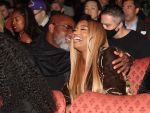Black teens are not smoking cigarettes as much as they used to, but they are firing up cigars more frequently, according to data in a recent survey released by the Centers for Disease Control and Prevention.
From 2009 to 2011, the rate of cigar smoking among African American high school students increased from 7.1 percent to 11.7 percent, the survey shows. The report also revealed high rates of cigar smoking and smokeless tobacco use among high school boys, with 15.7 percent smoking cigars and 12.9 percent using smokeless tobacco. Among all high school students, rates of cigar smoking and smokeless tobacco use have stayed steady even as cigarette smoking has declined, the survey showed.
These facts are alarming to anti-tobacco advocates.
Danny McGoldrick, vice president for research with the Campaign for Tobacco Free Kids, said African American and urban teens are being attracted more to the sweet, cheap cigars.
“We are seeing an explosion in the use of the cheap, flavored cigars,” McGoldrick told BlackAmericaweb.com. “Tobacco companies co-op the urban culture with fruit and candy flavored cigars,” he said “The youths can be easily lulled into a lifetime addiction.”
According to the Campaign for Tobacco Free Kids, almost 90 percent of cigarette smokers report that they started using tobacco products by age 18.
“Even though there are laws to prevent the sale of tobacco products to minors, they often find an older friend or sibling who will make their purchases, or they will find that one store in the neighborhood that will sell to minors,” McGoldrick said.
“The sweet, cheap cigars are easier for some to purchase when compared to cigarettes,” he said. “They can buy one or two cigars at a time. But with cigarettes, you have to purchase a full pack.”
The CDC also reports that:
-The more young people are exposed to cigarette advertising and promotional activities, the more likely they are to smoke.
-Extensive use of price-reducing promotions has led to higher rates of tobacco use among young people than would have occurred in the absence of these promotions.
-Many of the newest smokeless tobacco products do not require users to spit, and others dissolve like mints; these products include snus—a spitless, dry snuff packaged in a small teabag-like sachet—and dissolvable strips and lozenges. Young people find these products appealing in part because they can be used without detection at school or other places where smoking is banned. However, these products cause and sustain nicotine addiction, and most youth who use them also smoke cigarettes.
-Through the use of advertising and promotional activities, packaging, and product design, the tobacco industry encourages the myth that smoking makes you thin. This message is especially appealing to young girls. It is not true; teen smokers are not thinner than nonsmokers.
For some teens, the allure of buying and smoking gives them status when they are at an age of rebellion.
“They are looking for a way to say, ‘hey, I’m on my own,’” McGoldrick said.
“Each year, the tobacco industry spends almost $10 billion to market its products and half of all movies for children under 13 contain scenes of tobacco use,” said Howard Koh, assistant U.S. Secretary for Health.
“Half of our states continue to allow smoking in public places, and images and messages normalize tobacco use in magazines, on the Internet, and at retail stores frequented by youth,” Koh said. “With a quarter of all high school seniors and a third of all young adults smoking, the time is now to get a better handle on the large number of teens using tobacco products.”
Matthew L. Myers, President of the Campaign for Tobacco Free Kids, believes the survey shows that tremendous progress has been made in the fight against tobacco use, the nation's number one cause of preventable death.
“But it is also a timely reminder that the battle against tobacco is far from over,” Myers said.















